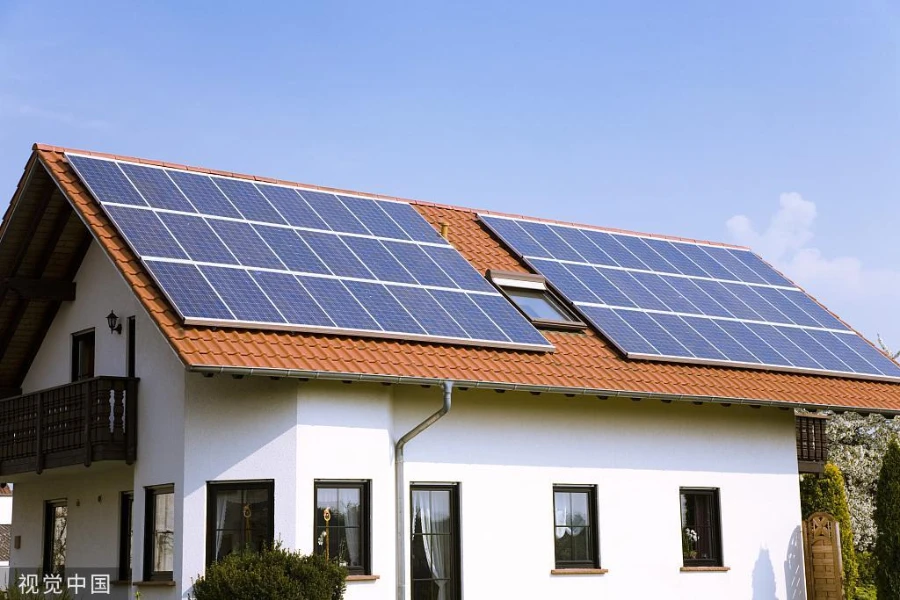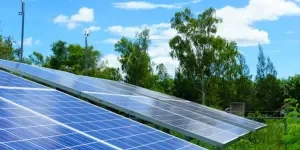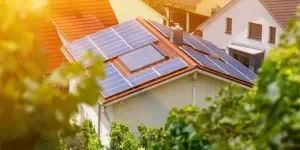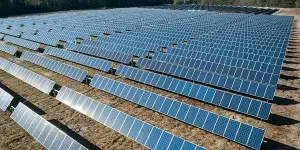Against the background of the global energy transition, the demand for clean energy worldwide is increasing. Solar energy has become one of the most popular energy solutions for its clean and renewable nature, and the efficiency of photoelectric conversion continues to improve while production costs decline. Thanks to this, more and more enterprises and individuals are moving to solar generator use. Solar systems are now widely used in residential, industrial, transportation, agriculture, and industries.
In this article, we’ll introduce general information about solar systems, such as their technology, classifications, advantages, and market demand, as well as application success stories. Together, we hope this information can help you seize market opportunities and provide helpful references for your business success.
Table of Contents
How solar panels work
Why we should shift towards solar cell utilization
How to choose the right solar cell
Solar cell success cases
Solar panel prospects
Conclusion
How solar panels work
Simply put, solar panels convert light energy into electrical energy via photoelectric processes. They are mainly composed of a solar cell, controllers, and inverters. The solar cell is arguably the most important part of a solar panel, using a photo-generated volt effect and semiconductor interface to convert light energy directly into electricity.
Why we should shift towards solar cell utilization
There are numerous reasons why businesses and individuals may want to consider switching to solar cell systems, including:
Ensuring safety of electricity
Off-grid solar systems, or distributed photovoltaic power generation systems, can produce electricity independently, thus reducing the user’s dependence on external power supplies. When natural disasters strike, or a power outage occurs, having an independent power supply means uninterrupted access to electricity. In areas where electricity is unreliable or prone to frequent severe weather conditions, such power storage systems offer a much-needed lifeline for businesses and individuals, minimizing financial losses and keeping users online.
Reducing energy bills
Solar systems help to reduce the cost of electricity for households and companies in the long run. In addition, excess electricity can be sold back to the grid, creating extra income for your family or company.

Almost no maintenance costs
Solar panels do not have complex electronic devices, which means after successful installation, they really need to be cleaned and checked regularly to ensure normal operation. Compared with traditional power generation equipment, solar power systems can help save time and money, and there is little to no maintenance cost.
Green and sustainable
Solar panels do not produce harmful gases such as carbon dioxide and sulfide during power generation, therefore they do not pollute the atmosphere and help to reduce greenhouse gas emissions. Solar power is a more environmentally friendly alternative to fossil fuels, and is inexhaustible. It also demonstrates an enterprise’s social responsibility and establishes a good image of sustainable development.
Keeping buildings insulated
Installing solar power stations on a building’s roof can also act as a secondary heat insulator, effectively reducing a roof’s temperature by 3°C to 5°C, lessening indoor energy consumption, and improving your working and living environment.
How to choose the right solar cell
If you’re in the market for solar cells, you’ll want to compare what material is used for the cell’s electrodes. Solar panels mostly utilize monocrystalline silicon, polysilicon, amorphous silicon, multi-compound, and flexible batteries. Monocrystalline silicon and polysilicon are the two most commonly used types at present. While both are made of silicon, their internal crystal structure differs, with monocrystalline silicon being composed of a complete crystal structure, giving it a high conversion efficiency of 18-24%. However, production costs are also high. Meanwhile, polysilicon is composed of a number of small elements, providing a lower conversion efficiency of around 16% but at a lower cost. Multi-crystal silicon panels may be better then for users who prioritize price over efficiency, while single-crystal options make sense for those seeking higher efficiency despite higher upfront costs. Choose based on your specific circumstances and environmental considerations.
Another aspect to think about is selecting between off-grid or grid-connected solar panels. An off-grid solar system is not connected to the public grid, therefore requiring it to have batteries for storage as well as a controller to regulate, charge, and discharge the electricity. Grid-connected solar systems are connected to the public grid, therefore converting alternating currents directly via an inverter.
Solar cell success cases
Solar panels for transportation
Replacing the top surface of carports with photovoltaic modules can help to achieve photovoltaic power generation and also provide shade and rain protection. Combining this with energy storage charging piles creates an integrated light and storage charging system for carports.
Project case
Ningbo Zhoushan Port, in China’s southern Zhejiang province, set up the first integrated photovoltaic charging shed project. The shed’s roof has a solar power generation panel with 10 DC charging piles. By using solar power efficiently, the shed can meet the changing needs of nearly 30 electric vehicles per day, based on an average charging time of 5-6 hours per vehicle.
Solar panels for agriculture
Solar panels can also be installed on the roof of agriculture projects, while the ground is used for planting and breeding. This provides electricity as well as shelter for crops, cattle, and sheep, improving regional ecological environment and optimizing a farm’s energy structure.
Project case
Jilin Fuxian photovoltaic power station projects adopt the “photovoltaic + agriculture and animal husbandry” model. Photovoltaic modules are installed on greenhouse roofs and livestock houses, achieving a total installed capacity of 190,000 kilowatts, making it the largest agro-light complementary project in China’s northeastern Jilin province.
Solar panels for fisheries
Solar panels can also be installed on lakes to generate electricity while maintaining fishery production conditions for fish farming. This mode improves land utilization and farmers’ incomes, creating a new industrial integration and development model.
Project case
The 350 MW fish-light complementary photovoltaic power station project in Chibi, China’s central Hubei province, adopts the farming mode of “facility fishery + ecological aquaculture + pond enclosure,” with an annual output value of about 88 million yuan. After completion, this project will provide about 460 million degrees of clean power per year.
Solar panel prospects
Currently, the return on investment for solar panels ranges between 18% and 30%. The investment amount depends on your construction cost, installed capacity, and expectations. For ordinary residential users, the payback period is about 6-7 years, while for commercial or power usage, it is around 5-6 years. The speed of payback will mostly depend on the electricity price and consumption volume.
The global photovoltaic industry is currently booming. According to the International Energy Agency (IEA), global PV installed capacity is expected to reach 1.3TW in 2023, doubling from 2018. This growth shows the rapid progress of photovoltaic technology and indicates that the global demand for renewable energy is accelerating. In addition, as the cost of photovoltaic power generation continues to fall, it is expected that by 2023, the average cost of photovoltaic power generation will fall to US $0.03-0.10 per KWh, a price that will make solar systems the optimal economic source of power supply in most regions.
Conclusion
Using solar cells can improve your electricity security and reduce energy expenses. When choosing batteries, you must select the appropriate battery type based on your actual usage. Currently, solar cells have numerous applications in both residential and industrial arenas. Therefore, with solar panels being further adopted across homes and industries, these systems look to have a bright future in the coming years.
For more trade solutions, industry overviews, and fresh perspectives on business ideas, make sure to subscribe to Alibaba.com Reads.



